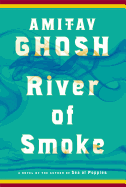
| Publisher: | Farrar, Straus & Giroux | |
| Genre: | General, Fiction, Action & Adventure, Historical, Literary | |
| ISBN: | 9780374174231 | |
| Pub Date: | September 2011 | |
| Price: | $28 |
| Fiction |
by Amitav Ghosh
River of Smoke, the second installment of Indian writer Amitav Ghosh's Ibis trilogy, is a sprawling historical novel that plunges readers into the secretive world of mid-19th-century China at the outset of the Opium Wars. Bahram Modi, an enterprising businessman from Bombay (and the father of Ah Fatt, a character in the previous novel, Sea of Poppies), is hell-bent on delivering one more shipload of opium to Canton before the Chinese authorities outlaw the drug for good. But when, against his wife's wishes, he sets sail, he is motivated more by a thirst for freedom than fortune and by the chance to see his Chinese mistress once again.
Ghosh's Canton is evocative; just outside the walled city, a Babel rife with greed and corruption teems with sailors, merchants and thieves of all nations. His insight into British opium smugglers is particularly brilliant. Although we re-encounter several characters from Sea of Poppies, this tale is essentially Bahram's, and he has more than enough complexity and depth to carry the story on his own. In essence, River of Smoke has everything fans of this genre could ask for--enough historic meat to sink your teeth in with just the right amount of spice to thrill the imagination. --Thomas Lavoie, former publisher
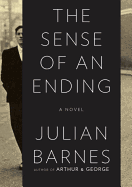
| Publisher: | Knopf | |
| Genre: | Fiction, Psychological, Coming of Age, Literary | |
| ISBN: | 9780307957122 | |
| Pub Date: | October 2011 | |
| Price: | $23.95 |
| Starred | Fiction |
by Julian Barnes
Julian Barnes's The Sense of an Ending is a sneaky little hand grenade of a novel. Just when you've pegged it as one man's blokeish but harmless retrospective of his muddled youthful friendships and middling amours, and admired his frank confession of wounds long salved by a blameless maturity, and nodded your assent to yet another quaint warning about the malleability of time and memory, the pin falls out. The ensuing detonation reilluminates the novel's entire battlefield of characters and relationships with much deeper emotional consequences and delivers a flaying lesson in the pitfalls of overburnishing the stories we tell ourselves about the past.
For most readers, it will be difficult to resist reading the tale anew to find out if you were misled or merely seduced. The beginning is worth revisiting in any case, to admire the way Barnes presages the novel's entire narrative in a bullet list of six lyrical images. Knowing this in advance will not spoil the ending--the clues and the denouement are too subtle to be defused by even a close first reading. Parsing the revelations of the last 13 pages would make good book club fodder.
The Sense of an Ending is Barnes's fourth novel to be shortlisted for the U.K.'s Man Booker Prize, a controversial decision given its brevity and the jettisoning of longer favorites. Some have speculated that the 2011 shortlisting is a late-career consolation and argued that Barnes's hefty historical novel Arthur & George, shortlisted in 2005, is a more significant work, but the two narratives are as unalike as chalk and cheese and can be consumed without reference to each other or to literary prize politics. --Holloway McCandless, blogger at Litagogo: A Guide to Free Literary Podcasts
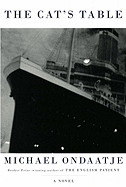
| Publisher: | Knopf | |
| Genre: | Fiction, Literary | |
| ISBN: | 9780307700117 | |
| Pub Date: | October 2011 | |
| Price: | $26 |
| Fiction |
by Michael Ondaatje
The epigraph for The Cat's Table is from Joseph Conrad's Youth, a tale told by Conrad's ubiquitous character, Marlowe, to his listeners: "And this is how I see the East.... It is all in that moment when I opened up my young eyes on it. I came upon it from a tussle with sea." So, too, does Ondaatje's 11-year-old narrator, Michael, in this lovely novel, come upon "it," at sea, on a liner sailing from Sri Lanka to England, where he will join his divorced mother. Like Conrad, Ondaatje arrived as an immigrant (when 11), first to England and later to Canada, mastering a new language along the way. This novel seems autobiographical, and yet, as with his "fictionalized memoir" Running in the Family, Ondaatje blurs the line between reality and invention.
And so the young boy begins a great adventure aboard the Oronsay. For meals, he's relegated to "the cat's table"; as a woman there tells him, "the least privileged place." But there he meets the quiet and thoughtful Ramadhin and the exuberant Cassius, a past schoolmate. Together, these three musketeers explore their new world and its inhabitants and make plans from the inner sanctum of the turbine room or under the lifeboat tarps where they feast on the food stored for emergencies.
Like Chaucer with Canterbury Tales, Ondaatje tells tales about people brought together on a trip (who they are, what secrets they keep), the children thus learning about adults and life "simply by being in their midst." Here are Max Mazappa, ship musician; Sir Hector de Silva, wealthy philanthropist seeking a cure; demure Miss Lasqueti and her "laugh that hinted it rolled around once or twice in mud"; the Australian girl who roller skates along the deck at dawn; the all-knowing Hyderabad Mind who performs evenings; the shackled, mysterious prisoner who is let out for late-night walks....
The Cat's Table is a paean to life, full of stories, wonderfully told. --Tom Lavoie, former publisher
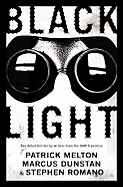
| Publisher: | Mulholland Books | |
| Genre: | General, Suspense, Fiction, Horror | |
| ISBN: | 9780316196710 | |
| Pub Date: | October 2011 | |
| Price: | $25.99 |
| Fiction |
by Marcus Dunstan, Patrick Melton, Stephen Romano
Buck Carlsbad's job takes years off his life--literally. A gifted medium, Buck acts as a ghost magnet, drawing evil spirits into himself to be neutralized but losing a bit of his own life each time. In the process, the "marks" draw him into a shadowy world of the dead that Buck terms the Blacklight, where he believes the answers to his parents' disappearance 30 years ago await him. Lately, the Blacklight voices have whispered that something big is coming. Then a rich executive asks Buck to go along as a spiritual bodyguard on the inaugural run of a bullet train that will change the face of American transportation, provided it survives passage through a deadly expanse of haunted desert that almost claimed Buck's life once before. Buck knows accepting the job could mean death, but he also knows returning to the desert is his best chance to find out what happened to his family.
Patrick Melton and Marcus Dunstan, the authors of the Saw film franchise, and Masters of Horror writer Stephen Romano pack their collaborative effort with enough psychotic spirits, bloody demises and double crosses to delight horror fans, as charismatic Buck finds himself hurtling into the maw of disaster, trapped and unable to trust any of his fellow passengers. Wry, complex and suspenseful, Black Light will keep spines tingling from the first ghoulish encounter to the final exorcism. --Jaclyn Fulwood, graduate assistant, University of Oklahoma Libraries
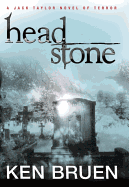
| Publisher: | Mysterious Press | |
| Genre: | General, Fiction, Mystery & Detective | |
| ISBN: | 9780802126009 | |
| Pub Date: | October 2011 | |
| Price: | $24 |
| Mystery & Thriller |
by Ken Bruen
The Galway Tourism Office will not be using the quote that local private investigator Jack Taylor offers: "It's Galway. If you let the weather dictate your life, you'd never go out." The good people in Tourism will probably also want to downplay what happens when Taylor (in very fine form for the ninth crime novel of this rollicking, sublimely nasty series, after The Devil) goes out of an evening.
A Church reform group, the Brethren, hires Taylor to locate a certain Father Loyola Dunne who has absconded with the Brethren's sizable funds. Nothing is as it seems, Taylor discovers, although he is not surprised. When it comes to priests and their methods, he has seen it all and forgotten none of it. As he interviews people with knowledge, he finds that all Galway harbors resentment against higher authorities (bankers, police and, of course, the Church) very similar to his own. Everyone is angry, and nobody is angrier than Taylor, who freely admits, "I'm bad-tempered naturally--my mother's legacy. Fear makes me dangerous." Some forces are so foolish as to try to scare him.
Rival private investigators, his employers in the Brethren and a lunatic cult dubbed Headstone act to push Taylor over the edge, and they suffer grave consequences. But readers will relish the nonstop mayhem unleashed through Galway streets as much as the dark-dark-dark humor of Ken Bruen who testifies, "Jack persisted with his philosophy of the law being for courtrooms and justice being for alleyways." --John McFarland, author
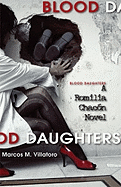
| Publisher: | Red Hen Press | |
| Genre: | Crime, Fiction, Police Procedural, Mystery & Detective, Thrillers, Women Sleuths | |
| ISBN: | 9781597094269 | |
| Pub Date: | October 2011 | |
| Price: | $18.95 |
| Mystery & Thriller |
by Marcos M. Villatoro
Marcos Villatoro's first book in the Romilia series, Home Killings, was a Los Angeles Times Best Book of 2001. Blood Daughters, the fourth in a series, picks up where A Venom Beneath the Skin left off. FBI agent Romilia Chacón has been through a lot--the loss of her sister, the loss of her lover and the loss of a partner's trust--so she drinks and smokes and apologizes for none of it.
A young woman is brutally mutilated and murdered on the California-Mexico border, and Chacón wants nothing to do with it until an old friend asks for help. So begins a rapid, well-written thriller whose heroine makes it worthwhile. Without Chacón, a Salvadoran-American, this would be a stereotypical whodunnit. With her, it's a cultural study of Mexican cops versus American law. It's an investigation of the child sex trade through the eyes of an angry, honest woman who will stop at nothing to beat the crap out of a murderer. Sound brutal? It is brutal--just like Chacón, whose crime scene observations rival Sherlock Holmes.
Blood Daughters is entertaining and well-written, with a vivacious heroine at the helm and action that doesn't stop. Villatoro has created a truly original lawwoman in Romilia Chacón; let's hope she's around for many books to come. --Sara Dobie, blogger at Wordpress

| Publisher: | Sourcebooks Casablanca | |
| Genre: | Literary Criticism, Love & Romance, Family & Relationships, Gothic & Romance | |
| ISBN: | 9781402254499 | |
| Pub Date: | October 2011 | |
| Price: | $14.99 |
| Nonfiction |
by Sarah Wendell
FACT: Jane Austen's Pride and Prejudice is considered by many to be the epitome of the romance novel genre. So, are contemporary romance novels gross bastardizations of their forebear? Maybe. Are they so much fun to read that we just don't care? Abso-damn-lutely. But in Everything I Know About Love I Learned from Romance Novels, her follow-up to 2009's Beyond Heaving Bosoms: the Smart Bitch's Guide to Romance Novels, Sarah Wendell suggests that it's not just about fun: reading romances is good for you.
Wendell's argument revolves around the idea that reading romance novels offers women (and some men) a safe zone in which to explore their own sexuality. Even more important, reading about fictional women who discover their value instills readers with a sense of their own self-worth. She backs this point up with quotes from scores of readers, novelists and even some fictional characters explaining how their years of reading romance have made them smarter, stronger and braver. At the same time, she doesn't ignore the genre's flaws; as any lover of romance novels will tell you, they can be a bit over the top. Sometimes the plots are unrealistic, sometimes they're frankly ludicrous--and we get that. In fact, we revel in it. More than just propaganda, Wendell's book is an irreverent celebration of the romance genre and the women who write it and read it. --Judie Evans, librarian
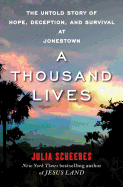
| Publisher: | Free Press | |
| Genre: | Denominations, Cults, Christianity, History, Religion, Social History | |
| ISBN: | 9781416596394 | |
| Pub Date: | October 2011 | |
| Price: | $26 |
| Religion |
by Julia Scheeres
After Jesus Land, her memoir of growing up with fundamentalist parents who sent her and her brother to a brutal Christian reform school in the Dominican Republic, Julia Scheeres started a novel about a charismatic Indiana preacher, basing the character on Rev. Jim Jones. But when she learned the FBI had released documents and audiotapes found in Jonestown, she began A Thousand Lives--a meticulously researched history of Jones's Peoples Temple and those who entrusted their lives to its maniacal leader.
More than three decades after Jones orchestrated the murder/suicide at his Guyana compound that claimed 978 lives, his fervent desire is realized: he is still remembered. But the power of this telling is in Scheeres's chronological description of how others came to believe; how Jones seduced not only church members but elected leaders; how threats and violence kept his followers subdued. "While the phrase 'drinking the Kool-Aid' has entered the cultural lexicon, its reference to gullibility and blind faith is a slap in the face of the Jonestown residents who were goaded into dying by the likes of Jim Jones," she writes. Besides the FBI files, she cites journal entries, letters and interviews with survivors and families to flesh out the lives of Jones's followers, "idealists [who] believed in a dream." We come to know and care for these victims, including Hyacinth Thrash, who was originally drawn to Jones in 1955 by his integrated choir; 23 years later, she followed him to Jonestown and was one of the few who survived.
Julia Scheeres's sensitive and detailed account of the Jonestown horror is compelling nonfiction and a significant contribution to understanding "Why?" --Cheryl Krocker McKeon, bookseller
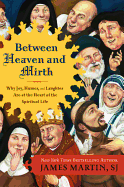
| Publisher: | HarperOne | |
| Genre: | General, Christian Life, Religion | |
| ISBN: | 9780062024268 | |
| Pub Date: | October 2011 | |
| Price: | $25.99 |
| Religion |
by James Martin
Why is God often viewed as a joyless judge? Why does the aim of religion sometimes seem like one of gloom and seriousness? Issues like these are what Jesuit priest James Martin (author of My Life with the Saints and culture editor of America magazine) addresses in the compelling and extremely entertaining Between Heaven and Mirth. Martin fully understands that some religious organizations seem more concerned with sin than with virtue--in Catholic culture, for instance, suffering is more often linked to spirituality than is joy. But he believes that God wants us to experience a joy-filled life, and thus his book becomes "an invitation, a challenge... to rethink the importance of humor and laughter in the life of believers" who seek to live out their spirituality in the modern world.
Martin refreshingly veers away from dogma and scholarly arguments to present an accessible historical examination of humor via the Bible (notably the Psalms and the Gospels), the lives of the saints and biographies of other notable spiritualists. He illustrates how the parables contain bursts of the absurd and "comedic hooks," and how numerous Biblical passages portray the playfulness of Christ and those who encountered Him. Between Heaven and Mirth is an enriching, inspiring read, leavened with humorous personal stories, jokes and anecdotes that give believers strategies to deepen their faith by cultivating a sense of delight and good humor in their own lives and church communities. --Kathleen Gerard, blogger at Reading Between the Lines
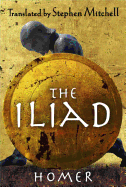
| Publisher: | Free Press | |
| Genre: | Literary Criticism, General, Ancient, Classical & Medieval, Poetry | |
| ISBN: | 9781439163375 | |
| Pub Date: | October 2011 | |
| Price: | $35 |
| Poetry |
by Homer, trans. by Stephen Mitchell
From the moment Stephen Mitchell opens with the ancient invocation of "the rage of Achilles," the reader is captivated by his rendition of Homer's epic poem of Greek and Trojan heroes in victory and defeat. Mitchell's translation is the first one based on the Greek text prepared by the eminent scholar Martin Litchfield West. West's text, published in two volumes between 1998 and 2000, addresses many authenticity issues raised since the 1920 publication of the Oxford Classical Texts edition. Based on West's work to rectify the text and the textual scholarship of other experts, Mitchell has removed many questionable passages; no removal is more obvious than the fearless omission of Book 10 in its entirety.
Remarkably, the absence of these passages does not hinder the path of the narrative merely to preserve the text's ür-form. Instead, Mitchell's exclusions facilitate the story's flow while avoiding the redundancy of some previous translations. Mitchell also diverges significantly from earlier Iliads through his careful use of language. By abandoning traditional Homeric epithets such as "swift-footed Achilles" in favor of a more laconic, yet equally correct "Achilles," Mitchell returns the epic poem to a simpler form with clear, robust language that is not augmented for meter. All in all, this handsome hardcover edition breaks through centuries of accumulated cultural weight and restores the Iliad to its rightful legacy as a gripping epic that will keep the reader up long past the appearance of the rosy-fingered dawn. --Sarah Borders, librarian, Houston Public Library
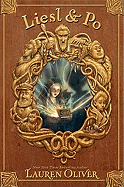
| Publisher: | HarperCollins | |
| Genre: | Friendship, General, Fantasy & Magic, Social Issues, Family, Juvenile Fiction | |
| ISBN: | 9780062014511 | |
| Pub Date: | October 2011 | |
| Price: | $16.99 |
| Children's & Young Adult |
by Lauren Oliver, illust. by Kei Acedera
Lauren Oliver (Before I Fall; Delirium) transports readers to a Dickensian world and introduces orphans Liesl and Will, a touch of magic, some delectable coincidences and friendship that stretches from the Living Side to the Other Side.
On the third night after her father's death, Liesl meets a ghost named Po (neither boy nor girl), who crosses from the Other Side with a pet called Bundle (neither cat nor dog). Po has come to ask Liesl a question: "Why did you stop drawing?" The girl tells Po that she didn't get to say goodbye to her father, and asks Po to carry a message to him on the Other Side. Po agrees to try, but in return, Liesl must make Po a drawing. Will, the alchemist's apprentice who stands unseen beneath Liesl's window most nights, has also noted Liesl's absence. But on this night, he is rewarded for his efforts. Seeing the girl back at the window, Will "vowed suddenly that he would never let anything bad happen to [her].... He had some vague idea that it would be terrible for himself."
This kind of tantalizing foreshadowing is just one way that Oliver skillfully emulates Dickens. She also uses coincidence masterfully: secondary characters with an overlapping past, near misses between villains and heroes, and the unwitting switch of two bread loaf–shaped wooden boxes that leads to Will and Liesl's eventual meeting. This book's healing message will offer comfort to children living with the absence of a loved one, and its swift plotting will sweep them up in the adventure. --Jennifer M. Brown, children's editor, Shelf Awareness
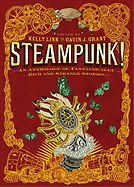
| Publisher: | Candlewick Press | |
| Genre: | General, Science Fiction, Science & Technology, Fantasy & Magic, Short Stories, Juvenile Fiction | |
| ISBN: | 9780763648435 | |
| Pub Date: | October 2011 | |
| Price: | $22.99 |
| Children's & Young Adult |
by Kelly Link and Gavin J. Grant, editors
This anthology of original stories by many of the best of today's fantasy and science fiction writers gives teens 14 stories that will spark a new way of looking at the steampunk subgenre.
In their introduction, Grant and Link claim that as they edited these submissions, they found that "makers and artists have taken the romance and adventure of steampunk and remixed, reinvented, and remade the genre from whole cloth--and, yes, brass widgets." They don't mention that all the stories are of consistent excellence, with surprises galore. Since it's difficult to point to a "best" story, here are a few favorites. Elizabeth Knox (Dreamhunter; Dreamquake) sets her "Gethsemene" on a volcanic island near the eponymous town, where engineers plan to harness the power of the quiescent Mount Magdalene in a process one character describes as "poking at beehives." Australian newcomer Kathleen Jennings's entry, "Finishing School," relates the stories of two women whose love for science leads them in very different directions. Told in graphic format, this tale does it all in 17 pages--humor, suspense and fully realized characters. M.T. Anderson (Feed) gives readers "The Oracle Engine," which the author claims is "translated from 'Mendacius's True History of the Roman Inventors' " and features a device inspired by a need to stick it to greedy Crassus.
Steampunk! will appeal to teen--and adults--for its originality of execution, variety of settings and the pure panache displayed by its 14 authors and artists. --Ellen Loughran, adjunct professor of the Pratt Institute